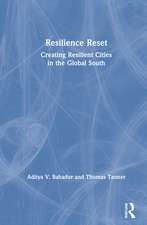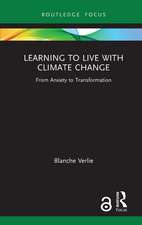Molecular Environmental Soil Science: Progress in Soil Science
Editat de Jianming Xu, Donald L. Sparksen Limba Engleză Paperback – 14 dec 2014
| Toate formatele și edițiile | Preț | Express |
|---|---|---|
| Paperback (1) | 954.14 lei 6-8 săpt. | |
| SPRINGER NETHERLANDS – 14 dec 2014 | 954.14 lei 6-8 săpt. | |
| Hardback (1) | 968.19 lei 6-8 săpt. | |
| SPRINGER NETHERLANDS – 7 noi 2012 | 968.19 lei 6-8 săpt. |
Preț: 954.14 lei
Preț vechi: 1163.58 lei
-18% Nou
Puncte Express: 1431
Preț estimativ în valută:
182.60€ • 189.93$ • 150.74£
182.60€ • 189.93$ • 150.74£
Carte tipărită la comandă
Livrare economică 15-29 aprilie
Preluare comenzi: 021 569.72.76
Specificații
ISBN-13: 9789401784863
ISBN-10: 9401784868
Pagini: 500
Ilustrații: X, 490 p.
Dimensiuni: 155 x 235 x 26 mm
Greutate: 0.69 kg
Ediția:2013
Editura: SPRINGER NETHERLANDS
Colecția Springer
Seria Progress in Soil Science
Locul publicării:Dordrecht, Netherlands
ISBN-10: 9401784868
Pagini: 500
Ilustrații: X, 490 p.
Dimensiuni: 155 x 235 x 26 mm
Greutate: 0.69 kg
Ediția:2013
Editura: SPRINGER NETHERLANDS
Colecția Springer
Seria Progress in Soil Science
Locul publicării:Dordrecht, Netherlands
Public țintă
ResearchCuprins
Advances in the Use of Synchrotron Radiation to Elucidate Environmental Interfacial Reaction Processes and Mechanisms in the Earth's Critical Zone".-
Microbial Roles in Mineral Transformations and Metal Cycling in the Earth's Critical Zone.-
Role of Biomolecules in Infuencing Transformation Mechanisms of Metals and Metalloids in Soil Environments.-
Mechanisms for the interaction between heavy metals and variable charge surfaces.-
The Electrostatic Field Effect from Surface Charges on Ion Diffusion/Adsorption in the Soil.-
Dynamics of persistent organic pollutants in soil environment and their interaction with organic matter and root exudates.-
Microbial extracellular enzymes and the degradation of natural and synthetic polymers in soil.-
Effects of “aging” on bioreactive chemical retention, transformation, and transport in soil.-
Sorption comparison between pharmaceuticals and hydrophobic organic chemicals in soils and sediments.-
Adsorption of Organic Compounds by Black Carbon from Aqueuous Solution.-
Structure, biological activity and environmental fate of insecticidal Bt (Bacillus thuringiensis) Cry proteins of bacterial and genetically modified plant origin.-
Subsoil acidification in farming systems: its possible causes and management options.-
Microbial indicators of soil quality in upland soils.-
The role of bacteria and archaea in nitrification, nitrate leaching and nitrous oxide emissions in nitrogen-rich grassland soils.-
Impacts of agricultural management practices on soil physical, chemical and biological properties.
Microbial Roles in Mineral Transformations and Metal Cycling in the Earth's Critical Zone.-
Role of Biomolecules in Infuencing Transformation Mechanisms of Metals and Metalloids in Soil Environments.-
Mechanisms for the interaction between heavy metals and variable charge surfaces.-
The Electrostatic Field Effect from Surface Charges on Ion Diffusion/Adsorption in the Soil.-
Dynamics of persistent organic pollutants in soil environment and their interaction with organic matter and root exudates.-
Microbial extracellular enzymes and the degradation of natural and synthetic polymers in soil.-
Effects of “aging” on bioreactive chemical retention, transformation, and transport in soil.-
Sorption comparison between pharmaceuticals and hydrophobic organic chemicals in soils and sediments.-
Adsorption of Organic Compounds by Black Carbon from Aqueuous Solution.-
Structure, biological activity and environmental fate of insecticidal Bt (Bacillus thuringiensis) Cry proteins of bacterial and genetically modified plant origin.-
Subsoil acidification in farming systems: its possible causes and management options.-
Microbial indicators of soil quality in upland soils.-
The role of bacteria and archaea in nitrification, nitrate leaching and nitrous oxide emissions in nitrogen-rich grassland soils.-
Impacts of agricultural management practices on soil physical, chemical and biological properties.
Notă biografică
Dr. Jian-ming Xu is a soil scientist with particular interests in the field of the chemical and biochemical processes of contaminants in soil, characterization of soil humic substances, and impact of soil environmental quality on food safety. He is now a leading scientist and the Director of Soil and Water Resources & Environmental Science at Zhejiang University, the Chair of Soil Chemistry Division of Soil Science Society of China, and the Coordinator of Chinese Chapter of International Humic Substances Society. He has published over 200 scientific papers, notably in top international journals as Soil Biology & Biochemistry, etc.
Dr. Donald L. Sparks is S. Hallock du Pont Chair of Soil and Environmental Chemistry, Francis Alison Professor, and Chairperson, Department of Plant and Soil Sciences at the University of Delaware at Newark. He also holds joint faculty appointments in the Departments of Civil and Environmental Engineering and Chemistry and Biochemistry, and in the College of Marine Studies. In 2006, he was appointed as Director of the Center for Critical Zone Research, a university wide center dealing with environmental science and engineering. His discoveries on the formation and role of surface precipitates in the retention, fate and transport of metals in natural systems have received worldwide attention and had major impacts in the areas of sorption models, metal speciation and soil remediation/contamination. He has (co-)authored and edited over 200 publications. He served as Co-Editor-in-Chief of Geoderma and on the Editorial Boards of Soil Science, Advances in Agronomy, Pedosphere, Geochimica Cosmochimica Acta, and Vadose Zone Journal. At the University of Delaware, Dr. Sparks was instrumental in building the soil science program, including the establishment of the federally funded Institute of Soil and Environmental Quality (ISEQ) and the establishment of the UD Center for Critical Zone Research (CCZR). Dr. Sparks has been the recipient ofnumerous awards and honors.
Dr. Donald L. Sparks is S. Hallock du Pont Chair of Soil and Environmental Chemistry, Francis Alison Professor, and Chairperson, Department of Plant and Soil Sciences at the University of Delaware at Newark. He also holds joint faculty appointments in the Departments of Civil and Environmental Engineering and Chemistry and Biochemistry, and in the College of Marine Studies. In 2006, he was appointed as Director of the Center for Critical Zone Research, a university wide center dealing with environmental science and engineering. His discoveries on the formation and role of surface precipitates in the retention, fate and transport of metals in natural systems have received worldwide attention and had major impacts in the areas of sorption models, metal speciation and soil remediation/contamination. He has (co-)authored and edited over 200 publications. He served as Co-Editor-in-Chief of Geoderma and on the Editorial Boards of Soil Science, Advances in Agronomy, Pedosphere, Geochimica Cosmochimica Acta, and Vadose Zone Journal. At the University of Delaware, Dr. Sparks was instrumental in building the soil science program, including the establishment of the federally funded Institute of Soil and Environmental Quality (ISEQ) and the establishment of the UD Center for Critical Zone Research (CCZR). Dr. Sparks has been the recipient ofnumerous awards and honors.
Textul de pe ultima copertă
This book focuses on the Critical Zone supporting life at the Earth’s surface with emphasis on the new and emerging subject area of molecular environmental soil science. Advances in research methodology, and the use of synchrotron radiation in particular, are extensively reviewed. The role of microbes and biomolecules in mineral transformations, metal cycling, and the degradation of natural and anthropogenic organic compounds are also highlighted. The book is unique because it integrates a number of key contributions from traditionally separate disciplines. It also adds an important, and much needed, molecular dimension to an area of science that has traditionally been viewed on larger scales. The book identifies knowledge gaps, provides future research directions and addresses advances in research and education at molecular level. in this extremely important and challenging area of science for years to come. The International Union of Pure and Applied Chemistry (IUPAC) Project Committee noted that the Conference, on which the book is based, identifies and builds on the need to view and understand the Critical Zone at the molecular level. The book will be an invaluable reference for researchers, students and professionals in this field of work.
Caracteristici
This book is based on the proceedings of the “International Symposium of Molecular Environmental Soil Science at the Interfaces in the Earth’s Critical Zone”; USPs are not required.








































